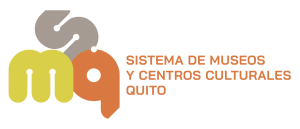[et_pb_section fb_built=»1″ admin_label=»Hero Section» _builder_version=»4.24.3″ use_background_color_gradient=»on» background_color_gradient_direction=»120deg» background_color_gradient_stops=»#000000 0%|rgba(0,0,0,0) 100%» background_color_gradient_overlays_image=»on» background_color_gradient_start=»#000000″ background_color_gradient_end=»rgba(0,0,0,0)» background_image=»https://www.museosquito.gob.ec/wp-content/uploads/2021/09/GUSTAVO-ORCÉS.png» custom_padding=»10%||10%|» global_colors_info=»{}»][et_pb_row column_structure=»3_5,2_5″ admin_label=»Hero Area» _builder_version=»4.16″ global_colors_info=»{}»][et_pb_column type=»3_5″ _builder_version=»4.16″ custom_padding=»|||» global_colors_info=»{}» custom_padding__hover=»|||»][et_pb_text admin_label=»Title» _builder_version=»4.24.3″ text_font=»||||||||» header_font=»Montserrat|600|||||||» header_font_size=»60px» header_line_height=»1.2em» background_layout=»dark» animation_style=»fade» header_font_size_tablet=»» header_font_size_phone=»30px» header_font_size_last_edited=»on|phone» global_colors_info=»{}»]
Museo de Historia
Natural «Gustavo
Orcés V.»
[/et_pb_text][et_pb_text admin_label=»Subtitle» _builder_version=»4.24.3″ text_font=»Poppins||||||||» text_font_size=»18px» text_line_height=»1.8em» header_font=»||||||||» header_6_font=»Montserrat||||||||» background_layout=»dark» custom_margin=»|||» custom_padding=»|||» animation_style=»fade» inline_fonts=»Montserrat» global_colors_info=»{}»]
Dirección: Av. Ladrón de Guevara y Andalucía, Bajo el teatro Politécnico. Campus de la Escuela Politécnica Nacional.
Teléfonos: (593) 2976 – 300 Ext. 6008 o 6001
Horarios: lunes a viernes de 08h00 a 16h30.
[/et_pb_text][/et_pb_column][et_pb_column type=»2_5″ _builder_version=»4.16″ custom_padding=»|||» global_colors_info=»{}» custom_padding__hover=»|||»][et_pb_image src=»https://www.museosquito.gob.ec/wp-content/uploads/2024/04/mgo.png» title_text=»mgo» align=»right» _builder_version=»4.24.3″ _module_preset=»default» width=»83%» global_colors_info=»{}»][/et_pb_image][/et_pb_column][/et_pb_row][/et_pb_section][et_pb_section fb_built=»1″ admin_label=»About Section» _builder_version=»4.16″ custom_padding=»0px||0px|» global_colors_info=»{}»][et_pb_row column_structure=»3_5,2_5″ use_custom_gutter=»on» gutter_width=»0″ make_equal=»on» admin_label=»About Area» _builder_version=»4.16″ width=»100%» max_width=»100%» custom_padding=»0px||0px|» use_custom_width=»on» width_unit=»off» custom_width_percent=»100%» global_colors_info=»{}»][et_pb_column type=»3_5″ _builder_version=»4.16″ background_color=»#1e1d1c» custom_padding=»10%|5%|10%|5%» global_colors_info=»{}» custom_padding__hover=»|||»][et_pb_text admin_label=»Title» _builder_version=»4.24.3″ text_font=»||||||||» header_font=»||||||||» header_2_font=»Montserrat|600|||||||» header_2_text_align=»center» header_2_font_size=»36px» header_2_line_height=»1.2em» text_orientation=»center» background_layout=»dark» max_width=»550px» module_alignment=»center» custom_margin=»||0px|» custom_padding=»|||» animation_style=»fade» animation_direction=»top» global_colors_info=»{}»]
Sobre el museo
[/et_pb_text][et_pb_divider color=»#fdb467″ divider_position=»center» divider_weight=»3px» _builder_version=»4.16″ max_width=»50px» module_alignment=»center» animation_style=»slide» animation_direction=»top» animation_intensity_slide=»10%» animation_starting_opacity=»100%» global_colors_info=»{}»][/et_pb_divider][et_pb_text _builder_version=»4.24.3″ text_font=»Montserrat||||||||» text_text_color=»rgba(255,255,255,0.7)» text_font_size=»15px» text_line_height=»1.8em» text_orientation=»center» max_width=»570px» module_alignment=»center» custom_margin=»25px|||» animation_style=»fade» inline_fonts=»Montserrat» global_colors_info=»{}»]
El Museo de Historia Natural “Gustavo Orcés V.” (MHNGOV) tiene la misión de educar para la conservación a través de la educación ambiental, la investigación y la vinculación con la comunidad.
El museo fue creado respondiendo a la necesidad de tener un espacio interactivo para realizar actividades de educación ambiental, divulgación científica, e integrar la importancia de las colecciones científicas en el público en general.
Actualmente el museo cuenta con una sala del pasado donde se narra desde los inicios del planeta tierra hasta la evolución de la especie humana, poniendo énfasis en el desarrollo de la paleontología en nuestro país; en la sala del presente se encuentran las representaciones de los ecosistemas y es donde se abordan temas relacionados con los esfuerzos de conservación de la biodiversidad y sus retos, y un espacio de biblioteca infantil.
[/et_pb_text][/et_pb_column][et_pb_column type=»2_5″ _builder_version=»4.16″ background_color=»#282624″ custom_padding=»10%|5%|10%|5%» global_colors_info=»{}» custom_padding__hover=»|||»][et_pb_text admin_label=»Title» _builder_version=»4.24.3″ text_font=»||||||||» header_font=»||||||||» header_2_font=»Montserrat|600|||||||» header_2_text_align=»center» header_2_font_size=»36px» header_2_line_height=»1.2em» text_orientation=»center» background_layout=»dark» max_width=»550px» module_alignment=»center» custom_margin=»||0px|» custom_padding=»|||» animation_style=»fade» locked=»off» global_colors_info=»{}»]
TARIFAS
[/et_pb_text][et_pb_divider color=»#fdb467″ divider_position=»center» divider_weight=»3px» _builder_version=»4.16″ max_width=»50px» module_alignment=»center» animation_style=»slide» animation_direction=»top» animation_intensity_slide=»10%» animation_starting_opacity=»100%» locked=»off» global_colors_info=»{}»][/et_pb_divider][et_pb_text _builder_version=»4.24.3″ text_font=»Poppins||||||||» text_text_color=»rgba(255,255,255,0.7)» text_font_size=»18px» text_line_height=»1.8em» link_font=»||||on|||rgba(253,180,103,0.5)|dotted» link_text_color=»rgba(255,255,255,0.7)» ul_font=»||||||||» header_font=»||||||||» header_2_font=»||||||||» header_4_font=»Montserrat||||||||» header_4_font_size=»15px» text_orientation=»center» max_width=»570px» module_alignment=»center» custom_margin=»25px|||» custom_padding=»|||» animation_style=»fade» locked=»off» inline_fonts=»Montserrat» global_colors_info=»{}»]
Entrada libre para todo público.
[/et_pb_text][/et_pb_column][/et_pb_row][/et_pb_section][et_pb_section fb_built=»1″ admin_label=»Workshops and Events Section» _builder_version=»4.25.1″ custom_padding=»0px||0px|» hover_enabled=»0″ global_colors_info=»{}» background_color=»#000000″ sticky_enabled=»0″][et_pb_row column_structure=»2_5,3_5″ use_custom_gutter=»on» gutter_width=»0″ make_equal=»on» admin_label=»Workshops and Events Area» module_class=» et_pb_row_fullwidth» _builder_version=»4.24.3″ width=»100%» width_tablet=»100%» width_phone=»100%» width_last_edited=»on|desktop» max_width=»100%» max_width_tablet=»100%» max_width_phone=»100%» max_width_last_edited=»on|desktop» custom_margin=»|||» custom_padding=»0px||0px|» make_fullwidth=»on» global_colors_info=»{}»][et_pb_column type=»2_5″ _builder_version=»4.24.3″ background_color=»#eaeaea» custom_padding=»10%|5%|10%|5%» global_colors_info=»{}» custom_padding__hover=»|||»][et_pb_text admin_label=»Title» _builder_version=»4.24.3″ header_font=»||||||||» header_2_font=»Montserrat|600|||||||» header_2_font_size=»36px» header_2_line_height=»1.2em» animation_style=»fold» animation_direction=»left» animation_intensity_fold=»10%» animation_starting_opacity=»100%» global_colors_info=»{}»]
Contacto
[/et_pb_text][et_pb_divider color=»#fdb467″ divider_position=»center» divider_weight=»3px» _builder_version=»4.16″ max_width=»50px» module_alignment=»left» animation_style=»slide» animation_direction=»top» animation_intensity_slide=»10%» animation_starting_opacity=»100%» locked=»off» global_colors_info=»{}»][/et_pb_divider][et_pb_text _builder_version=»4.24.3″ text_font=»Montserrat||||||||» text_text_color=»#666666″ text_font_size=»15px» text_line_height=»1.8em» custom_margin=»25px|||» animation_style=»fold» animation_direction=»left» animation_intensity_fold=»10%» animation_starting_opacity=»100%» global_colors_info=»{}»]
Correo electrónico
museo@epn.edu.ec
[/et_pb_text][/et_pb_column][et_pb_column type=»3_5″ _builder_version=»4.24.3″ background_image=»https://www.museosquito.gob.ec/wp-content/uploads/2024/04/gov001.png» background_repeat=»repeat» custom_padding=»|||» global_colors_info=»{}» custom_padding__hover=»|||»][et_pb_divider show_divider=»off» _builder_version=»4.16″ width=»100%» height=»400px» locked=»off» global_colors_info=»{}»][/et_pb_divider][/et_pb_column][/et_pb_row][et_pb_row column_structure=»1_5,1_5,1_5,1_5,1_5″ _builder_version=»4.24.3″ _module_preset=»default» background_color=»#000000″ global_colors_info=»{}»][et_pb_column type=»1_5″ _builder_version=»4.24.3″ _module_preset=»default» global_colors_info=»{}»][et_pb_image src=»https://www.museosquito.gob.ec/wp-content/uploads/2024/04/facebook-1.png» title_text=»facebook» align=»center» _builder_version=»4.24.3″ _module_preset=»default» global_colors_info=»{}»][/et_pb_image][/et_pb_column][et_pb_column type=»1_5″ _builder_version=»4.24.3″ _module_preset=»default» global_colors_info=»{}»][et_pb_image src=»https://www.museosquito.gob.ec/wp-content/uploads/2024/04/instagram.png» title_text=»instagram» align=»center» _builder_version=»4.24.3″ _module_preset=»default» global_colors_info=»{}»][/et_pb_image][/et_pb_column][et_pb_column type=»1_5″ _builder_version=»4.24.3″ _module_preset=»default» global_colors_info=»{}»][et_pb_image src=»https://www.museosquito.gob.ec/wp-content/uploads/2024/04/twitter.png» title_text=»twitter» align=»center» _builder_version=»4.24.3″ _module_preset=»default» global_colors_info=»{}»][/et_pb_image][/et_pb_column][et_pb_column type=»1_5″ _builder_version=»4.24.3″ _module_preset=»default» global_colors_info=»{}»][et_pb_image src=»https://www.museosquito.gob.ec/wp-content/uploads/2024/04/youtube.png» title_text=»youtube» align=»center» _builder_version=»4.24.3″ _module_preset=»default» global_colors_info=»{}»][/et_pb_image][/et_pb_column][et_pb_column type=»1_5″ _builder_version=»4.24.3″ _module_preset=»default» global_colors_info=»{}»][/et_pb_column][/et_pb_row][/et_pb_section]

